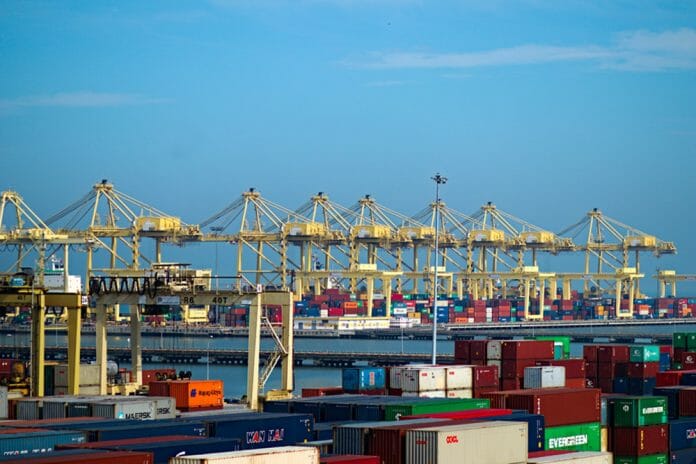Notable from Malaysia’s latest trade report was that exports fell in March by-1.4 YoY compared to February’s 9.8%, this was a concern by analysts but was already factoring in the drop.
Research house, Kenanga however said growth rebounded strongly on a Month on Month basis following two straight months of contraction, reflecting an improved demand compared to the previous month. For the first three months of 2023, growth was at 2.8% compared to 4Q22 which was at 11.8%, Kenanga notes that growth slowed sharply, with the lowest since 2Q20.
Weaker growth was due to a broad-based slowdown among major trading partners, lower shipment in the key sector, and partly due to the high base − By destination: weak demand from China, followed by EU and JP which turned negative -6.0%; compared to Feb: 8.3%), but this was partially supported by the US (7.5%; Feb: 18.7%) albeit at a moderate pace.
As by sector: broad-based slowdown was led by agriculture (-10.8%; Feb: -9.0%), followed by mining (-3.5%; Feb: 34.8%) and manufacturing (-0.4%; Feb: 9.5%) sectors. Imports contracted (-1.8%; Feb: 12.4%), the lowest since November 2020 and lower than expectations (KIBB: 1.5%; consensus: 2.2%). The weak growth was due to a high base as MoM growth rebounded sharply (11.1%; Feb: – 1.9%). This is also due to weak retained imports (-5.5%; Feb: 5.4%) and a slowdown in re-exports (10.3%; Feb: 37.7%)
By category, it was mainly due to the weak import of intermediate goods, which contracted sharply to the lowest level since November 2020. Nevertheless, growth was supported by an expansion in consumption goods and a rebound in capital goods. On a MoM basis, imports rebounded sharply to a nine-month high after four straight months of contraction.
Trade surplus surged to RM26.7b from Feb’s RM19.6b, a three-month high, and higher than expectations as MoM exports outpaced imports. For the first quarter, Malaysia recorded RM64.4b against 4Q22: RM68.0b, the surplus narrowed slightly compared to the previous quarter.
Meanwhile, total trade declined to a 28-month low amid a high-base effect. 2023 exports forecast retained at 5.8% (2022: 25.0%) in anticipation of slower global trade. Despite slightly better-than-expected trade performance in March, Kenanga said it still expects export growth to remain moderate in the coming months, with high probabilities of slipping into contraction due to the normalisation of economic activities, relatively lower commodity prices, and the waning effect of the lower base recorded last year.
Against this backdrop, the house is keeping its 1Q23 GDP forecast unchanged at 5.1%, with full-year growth estimated at 4.7%. Though the impact of the global economic slowdown is still uncertain, Kenanga said it still expects growth to be supported by China’s reopening. On the domestic front, growth is also expected to be supported by resilient domestic demand attributable to a lower unemployment rate, higher tourist arrivals, and investments as well as the resumption of infrastructure projects by the government.









